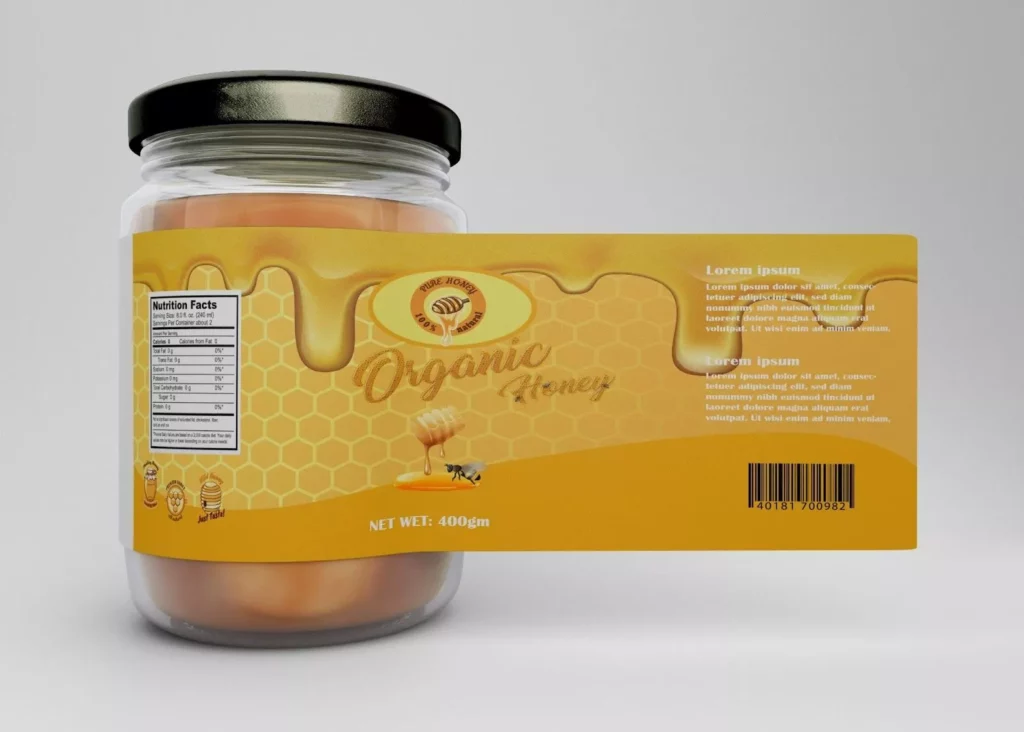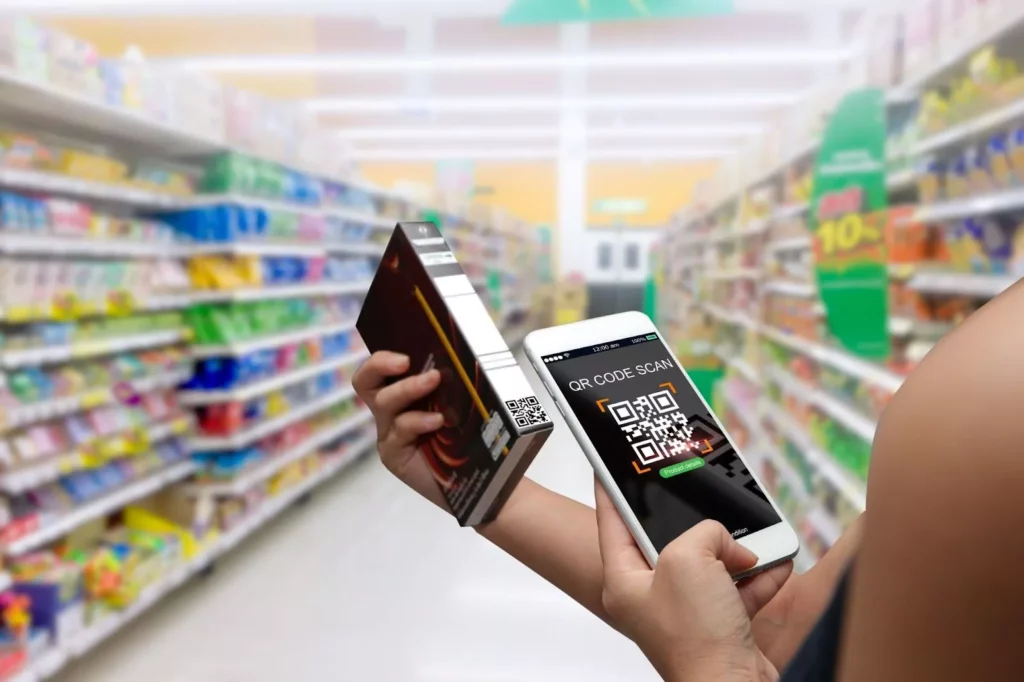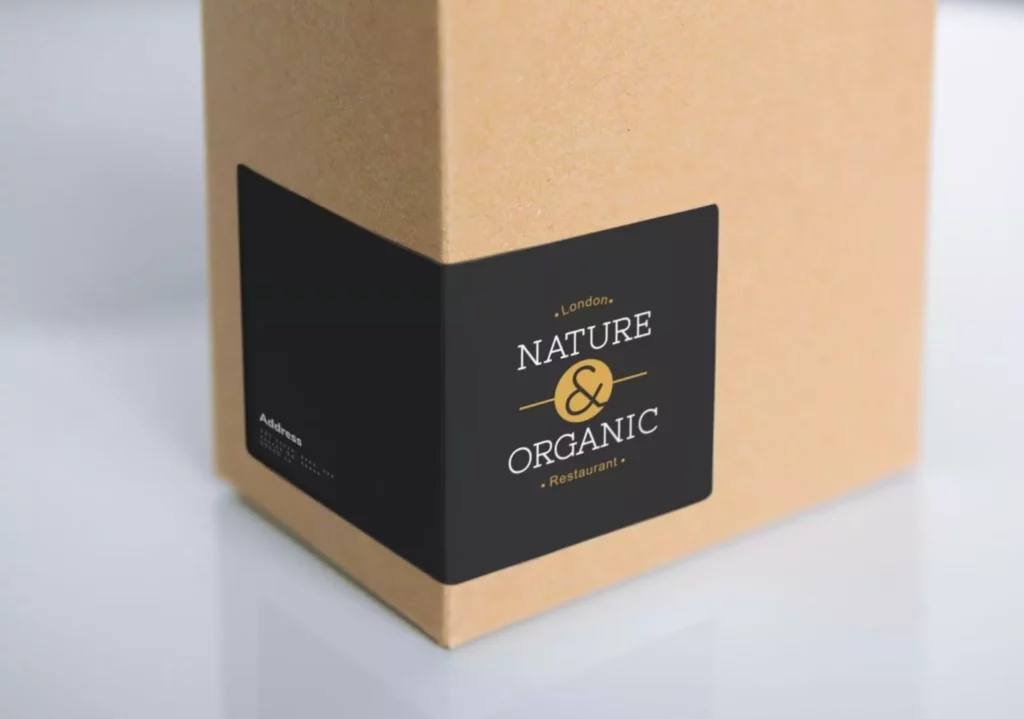All About Product Labels: Parts, Types, Design Strategies
Have you ever wondered why some product labels catch your eye while others go unnoticed? Product labels are more than simply stickers or tags; they have a powerful impact on consumer decision-making. For example, in a study, 68% of consumers were willing to pay more for food products labeled as cruelty-free.
This statistic highlights the importance of labels to provide vital information to consumers. Labels offer ingredient details, nutritional facts, usage instructions, and safety warnings. By conveying essential details, labels can influence consumers to make wise choices about the products they buy.
Labels go beyond providing information; they are instrumental in building brand identity and establishing a strong visual presence in the market. In a crowded marketplace, where countless products compete for attention, an eye-catching label design can make all the difference in capturing the attention of potential customers and differentiating a brand from its competitors.
Jump To Section:
- What Are Product Labels?
- What Are Prime Labels?
- Parts of a Product Label
- Types of Product Labels
- Design Strategies for Effective Product Labels
- Labeling Done Right
What Are Product Labels?

Product labels are tags that give consumers essential details such as ingredients, usage instructions, safety warnings, and branding elements. They serve as a direct information channel between brands and consumers, conveying necessary details and building brand identity.
Product labels influence purchase decisions, help businesses avoid legal liabilities, and differentiate products from competitors. A well-designed label can captivate shoppers and pique their interest.
By leveraging effective label design, brands can effectively communicate product features, benefits, and value to create a strong impact on consumers.
Accurate and informative labeling is of utmost importance for maintaining consumer trust. Studies show that consumers generally trust product labels and rely on them for making purchasing decisions.
However, a single erroneous or false claim can ruin that trust, tarnishing a brand’s reputation and exposing them to potential legal issues from false advertising or misinformation.
Consumers feel more confident about their choices when a label provides comprehensive, reliable, and easily digestible information. An accurate label fosters trust, loyalty, and recognition of the brand.
If you wish to learn more about product labels, read the following guides:
- The Elements of Effective Product Labels: Design Tips and Trends
- 10 Best Fonts for Your Product Labels
What Are Prime Labels?
Prime labels are the most recognized labels displayed prominently on product packaging. They are essential for product identification and differentiation within a specific category or market. Serving as the main label on the packaging surface, they distinguish the product from competitors and capture consumer attention.
Prime labels feature extensive branding and design elements, making the item stand out on store shelves. Conversely, secondary labels primarily provide practical information without additional designs. One can integrate them into the prime label or present them as separate tags.
Parts of a Product Label
Several distinct elements comprise a functional product label. Each component communicates a specific message to consumers. Businesses should understand the various parts to create effective and engaging product labels and packaging.

As an example, this article will use a hypothetical apple company to illustrate the use of each label element for the following two sections. The example company’s name is “Honest Orchards.”
Primary Components of a Product Label
Nearly all product labels contain the following parts:
1. Brand name and logo
The brand name and logo are essential elements that represent the identity and values of a company. Honest Orchards includes its logo and name on every apple. Its simple and vibrant design reflects the company’s commitment to straightforward and honest apples.
2. Product name
The product name should be a concise but descriptive identifier for customers to identify its use quickly. An Honest Orchard product can use Crisp Gala Apples. This name conveys the specific apple variety and emphasizes its desirable texture.
3. Product description and features
The product description and features section highlight critical details about a product. After capturing customers’ attention with a brand logo and product name, the description and features should effectively sell the product.
For example, a description of Crisp Gala Apples can mention their sweet and aromatic flavor, firm texture, and rich red color, giving customers a compelling and vivid description of the apple’s characteristics.
4. Ingredients and nutritional information
Many regulatory bodies and distributors require food and beverage labels to include ingredients and nutritional information for safety and transparency.
Apples, unsurprisingly, do not have a long list of ingredients as fresh produce items. However, Honest Orchards lists it as “100% fresh Gala apples.” The product’s nutritional information indicates that apples are a good source of fiber and nutrients, which the orchard highlights on the packaging.
5. Net weight/volume
The net weight or volume informs consumers of exactly how much of something they are purchasing. If a company wants to use much larger packaging than the product, it must indicate its contents to avoid misleading buyers.
Honest Orchard’s bag of apples might list it as “Net Wt.: 2 lbs.” or “Net Contents: 907g,” providing consumers with the precise quantity of apples they purchase.
6. Manufacturer information
The manufacturer information includes the name and contact details of the company. This section provides transparency and establishes accountability in case of concerns. Consumers can contact the company for inquiries, feedback, or assistance.
Honest Orchard’s manufacturer stamp reads: “Produced and Packed by Honest Orchard, Anytown, USA. Phone: (123) 457-7890.”
Other Product Label Elements to Consider
Companies may include more than the required information on their labels to improve their impact. These extra elements may consist of the following:
7. Symbols and certifications
Symbols and certifications, such as the USDA Organic Seal, visually reassure customers about product qualities. Typically, these stamps come from recognized third-party specialists in the field. Honest Orchards’ apples can proudly display this seal, indicating that they were grown without synthetic pesticides or fertilizers.
8. Barcodes and QR codes

The product label can feature scannable barcodes and QR codes. Barcodes facilitate inventory management and make it easier for distributors to sell the item. QR codes can link to additional information for consumers, which can help with engagement and brand reputation.
Honest Orchards’ boxes of apples have codes that lead to a webpage showcasing the Orchard’s sustainability practices and recipes that use Crisp Gala Apples.
9. Safety warnings and precautions
Many products can have related health and safety hazards. Companies include warnings to alert consumers to any potential risks. They don’t want anyone to get hurt, and they protect themselves from legal liability in case of product misuse.
Apples do not require extensive safety warnings. However, Honest Orchards includes a simple precaution: “Wash before consuming.”
10. Usage instructions and guidelines
Some products only function when people use them in a particular way. Or they may be dangerous when done differently. Usage instructions and guidelines help customers achieve their desired goal with the product while minimizing safety concerns.
Consuming an apple is straightforward, but Honest Orchard includes the instructions, “Slice and add to salads, pies, or desserts.” These suggestions inspire customers to explore various ways of incorporating apples into their dishes, boosting engagement.
Learn more about the intricacies of label designs with the following articles:
- The Foundations of Great Product Label Designs: A Visual Guide
- How Does RFID Work in Product Packaging and Labeling?
- 13 Most Important Parts of a Product Label
Types of Product Labels
Label types, specifications, and requirements vary significantly depending on several factors, including the country, industry, and product type. Generally, you can separate them based on their manufacturing process or purpose.

4 Types of Product Labels by Manufacturing Process
Label designers have invented many creative ways to apply labels to product packaging, each with unique characteristics and benefits. Here are four popular strategies:
1. Pressure-sensitive
A pressure-sensitive label is an adhesive label that’s typically composed of three layers:
- A facestock
The outer layer of the label, known as the facestock, showcases the design elements and information. Sometimes, a transparent layer is added to protect against the elements.
- Adhesive
The adhesive layer comes built into the manufacturing process of this label type. It can stick to most surfaces, making it very versatile.
- Liner or carrier
The layer that keeps the adhesive sticky until the label is ready for use.
2. Shrink sleeves
Shrink sleeves are plastic films with label designs and information that shrink to conform to the shape of containers when heat is applied. They are ideal for irregularly shaped packages without convenient surfaces for pressure-sensitive labels.
3. Cut-and-stack
Cut-and-stack labels are cost-effective paper labels produced in large sheets for efficient mass production. Manufacturers cut these sheets into individual labels, then stacked and applied to product containers. This labeling solution offers versatility in design options while remaining economical.
4. In-mold labels
In-mold labels are applied during the shaping process of packaging. Manufacturers print a thin plastic film with the desired design and place it inside a mold. As the plastic packaging material takes shape, the film fuses into it, creating a seamless and highly durable label.
4 Types of Product Labels by Purpose
Besides the manufacturing process, you can also identify labels based on the information they communicate.
1. Brand labels
This type of product label focuses on showcasing and reinforcing the identity and values of a brand or product line. They typically rely on already established brand elements—such as the company name, logo, colors, or aesthetics, to evoke a sense of trust and loyalty.
Examples include the iconic Nike swoosh logo and the distinct Coca-Cola logo and colors. Both companies can launch a new product entirely unrelated to their previous catalogs. To be instantly recognizable, they can include their particular design elements on the label.
2. Descriptive labels
Descriptive labels informatively describe a product, giving only factual, unbiased information about a product. They can include ingredients, common allergens, nutritional content, warnings, and instructions.
Nutritional panels are likely the most seen descriptive label because the government regulates their inclusion and accuracy. Warnings on chemicals are also prevalent in descriptive labels.
3. Grade labels
Grade labels designate the quality or standard of a product based on predetermined criteria. Independent expert groups assign these to provide consumers with a clear indication of the product’s quality level.
The USDA beef grading system classifies beef products into categories. Another example is Energy Star, a government-backed energy efficiency rating for home appliances.
4. Promotional labels
Promotional labels serve two main purposes: creating a sense of urgency and delivering compelling marketing messages. The first uses attention-grabbing language, such as a “Limited Time Offer!” to encourage purchasing decisions. These labels are typically temporary additions to the packaging rather than directly printed.
The second type of label promotes the product’s features and benefits, highlighting and often exaggerating specific claims. For example, a non-verified claim that the product uses Post-Consumer Recycled packaging or is cruelty-free.
Labels can vary significantly between types. Find out more about label types’ functions and intended messages with the following articles:
- The Advantages of Instant Redeemable Coupons (IIRCs) for Businesses
- What are Compostable Labels? A Guide to Applications and Certifications
- What are Ecolabels? The Objectives of Ecolabeling
Design Strategies for Effective Product Labels

Regarding custom product labels, one should design them to be visually impactful and informative. The goal is to capture consumers’ attention and effectively communicate vital information. Working with a knowledgeable and skilled label supplier is key to creating visually appealing labels that align with consumer preferences.
1. Clear and legible typography
Choose a typography that’s easy to read at various sizes and distances. Clear, well-spaced fonts enhance readability, allowing consumers to easily and quickly understand important information.
2. The balance between simplicity and uniqueness
The requirement for legible typography does not mean a business must sacrifice style. The right balance between simplicity and originality can make a product visually distinctive and memorable without trading utility.
3. Consistent branding elements
Labels should incorporate consistent branding elements across a company’s product line, such as color schemes, fonts, or logo placement. Having at least one identifiable mark creates a cohesive visual identity, allowing consumers to recognize the product and strengthen the brand association.
4. Sustainability and eco-friendly aspects
Companies can appeal to consumers’ increasing environmental consciousness by using and highlighting sustainable and eco-friendly practices. For example, mentioning recycled packaging on the label can resonate with eco-conscious customers and demonstrate the company’s commitment to sustainability.
5. Visual hierarchy of information
A product label should follow a visual hierarchy that ensures the most critical data is prominent. Font size, type placement, and color contrast naturally lend themselves to emphasizing or understating words and portions of the label.
If a customer stops partway through reading a label, they should still have everything they need to make an informed decision thanks to the label’s visual hierarchy.
For more insights into designing a label, read the following articles:
- Are Food Labels Misleading? Why Proper Labelling is Important
- Understanding Sustainable Labels: Materials and Tips to Consider
Labeling Done Right
A product label is the face of a product and, by extension, its company. A well-designed label goes beyond mere stickers or tags. It encapsulates essential information, conveying product features and benefits while building the brand’s identity.
In a competitive market, captivating consumers requires investing in thoughtful and visually appealing label design. That’s why you should partner with Meyers! As a product packaging manufacturer and designer, we provide superior and sustainable packaging solutions to help your business stand out.
Contact our packaging experts today to get your labeling done right!

